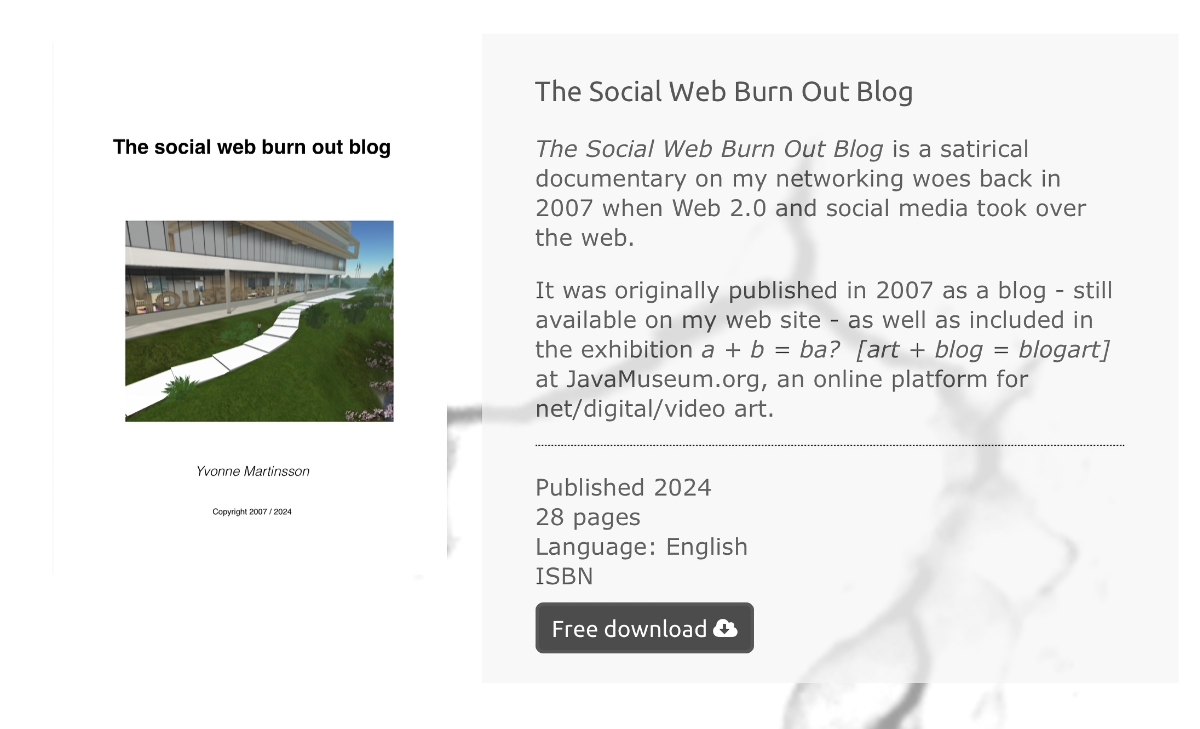Networked redefined > 19/10/09
In the light of the newly published experiment for a networked book at http://networkedbook.org, a few thoughts about the word “networked” and a possible (re)definition of networked in a networked culture.
The idea of a networked book on networked art “proposes,” the editors Jo-Anne Green and Helen Thorington say, “that a history or critique of interactive and/or participatory art must itself be interactive and/or participatory; that the technologies used to create a work suggest new forms a “book” might take.” The new technology is a WordPress blog that collects a select number of articles. So, we have a number of Word[Press] documents/posts collected into a networked book/blog. It may be a new technology, skinned, themed and customized, but in what way does it differ from a print edition of those Word documents? And, in what way is it networked?
Both questions find their answer in the CommentPress plug-in (now renamed to digress.it) from if:book, a project by The Institute for the Future of the Book and one of the sponsors of the networked project. The CommentPress plug-in allows for granular commenting at the paragraph level. These comments are appended to the body of the text and may later be worked into it, if the article writer so wishes. The hierarchy between author/reader, then, is maintained in the kind of networked writing we witness here. As Bob Stein from if:book says: “discourse in a dynamic network doesn’t erase the distinction between authors and readers, but it significantly flattens the traditional perceived hierarchy.” I’ll take Bob Stein’s word for that as he continues that the author of a networked book be
a leader of a group effort, similar in many respects to the role of a professor in a seminar. The professor has presumably set the topic and likely knows more about it than the other participants, but her role is to lead the group in a combined effort to synthesize and extend knowledge.
Oops! Back to the classroom. While networked in my understanding takes place on an equal footing where different kinds of knowledge and skills interact and sustain the networked project in question, there is one point in Stein’s argument that deserves attention - the role of the professor is not only to be a leader but to provide continuity and, in the classroom, the object of study provides a common goal and thus, once again, continuity. Continuity and aim seems to be the glue that keeps the networked project together. In short, it needs a common ground.
After the event of Barthes, who took the unconscious for his teaching/writing/reading model; a strategy that aimed at allowing the necessary space for other bodies and plurality of voices, Stein’s classroom model is a huge step backwards. So, let’s return to Barthes and pick up the thread of the unconscious as a teaching/writing/reading model.
The unconscous is an open-ended [and thus networked] system where there is no definite positionality, that is, the unconscious is never in its place. It’s fragmentary, distributed, discursive, entangled in knots (with others, with texts, with culture and so on), always already networked in other words, long before networked culture came along.
What if the term networked is redefined, if it denotes the unconscious instead of the social? What happens if we take the unconscious as a networked model in a networked, digital culture where we have RSS aggregators, migrating data streams, bookmarking and services such as diigo that allows for collecting pdfs, articles, blogs, art, pics, video, annotating, collaborating, sharing and so on? What if we create our own networked collection of hypertextual fragments in a social context, individually or in a group, where we are at once readers/editors/authors? Maybe, the possibility of individual open-ended ‘books’ with different voices constantly changing, evolving, ‘books’ that do not make up a unified whole.
Last edited: 2021-01-01 tagged: digital writing :: the unconscious filed under: the new screen

